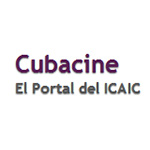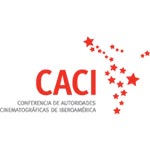Raymundo Gleyzer nació en Buenos Aires en 1941. Hijo de Jacobo (un ruso ucraniano) y Sara Aijen, ambos artistas y activistas que fundaron el teatro IFT (Idisher Folks Theater -Teatro Popular Judío) donde Raymundo creció.
A los 20 años Gleyzer decide dejar la Facultad de Ciencias Económicas y solicita la inscripción en la de Cine, en La Plata. A partir de 1964 comienza el primero de los tres períodos del cine y documental políticos de Raymundo: será el de carácter etnológico. De esta época sale la trilogía Ocurrido en Hualfin.
A partir de 1965 se abre un nuevo período marcado por su trabajo en noticieros (Canal 7 y Telenoche). En su búsqueda personal, este tipo de trabajos terminará con una película propia México, la Revolución congelada. A nivel personal se incrementa su formación como marxista y su alejamiento definitivo del Partido Comunista..
En 1972, con una fuerte crisis dentro del PRT (Partido Revolucionario de los Trabajadores-Argentina) y con la desintegración del FATRAC (Frente Antiimperialista de los Trabajadores de la Cultura), Raymundo (militante del PRT) comienza el camino que lo llevará a su único largometraje de ficción, Los traidores. La búsqueda de Gleyzer apuntaba a un cine que entretuviera y concientizara al mismo tiempo, lo que se podría considerar el tercer período.
Al mismo tiempo que filmaba Los traidores, filmó un corto sobre la masacre de Trelew: Ni olvido ni perdón. La película se hizo básicamente con la conferencia de prensa que los fugados del penal habían dado en el aeropuerto (donde estaban varados) y con una serie de fotos. Al mismo tiempo nacía el FAS (Frente Antiimperialista por el Socialismo), que se relacionó directamente con el proyecto de Cine de Base.
En 1973 crea el grupo Cine de la base para llevar el cine a los mismos protagonistas de sus films, los desposeídos de la tierra, los obreros, los indios y los campesinos.
Fue una época en donde se organizaban proyecciones para el debate; se programaban Los traidores, Informes y testimonios, y Operación masacre de Cedrón, basada en la novela de Rodolfo Walsh. Las proyecciones se daban cita en cualquier lugar y fuera de Buenos Aires también: La Plata, Córdoba, Rosario, Tucumán. Y el Cine de la Base se iba expandiendo. La idea era crear una red que llegara a todo el interior del país, y que funcionara también como una distribuidora.
A medida que las cosas van empeorando en el país, la militancia de Raymundo va creciendo. Ansiaba formar una cadena de salas dentro de las villas, solo con lo necesario: proyector, un techo y bancos. Nunca llegó a concretarlo.
Hacia 1975 Argentina era un hervidero, la situación era caótica y el funcionamiento de la Triple A (organización terrorista de extrema derecha -Alianza AntiComunista Argentina-) ya era pleno. Raymundo, como otros militantes de organizaciones de izquierda, se convierte en un blanco móvil, su imagen, su nombre era el símbolo del Cine de la Base. En 1976 realiza un viaje a New York por trabajo, la filmación se demora y Raymundo decide volver a Argentina. El 27 de mayo falta a una cita con un amigo... Raymundo había sido secuestrado. Su casa había sido allanada y la puerta rota a la fuerza; todo estaba roto y revuelto y de Gleyzer no había rastros. Nunca más volvió a aparecer.
Filmografía
1964 El ciclo
1964 La tierra quema
1966 Ocurrido en Hualfin
1966 Quilino
1966 Pictografías del cerro colorado
1966 Ceramiqueros de tras la sierra
1966 Nuestras islas malvinas
1967 Mataque
1969 Nota especial sobre Cuba
1970 México, la revolución congelada
1971 Swiet
1972 BND
1973 Ni olvido, ni perdón
1973 Los traidores
1974 Me matan sino trabajo, si trabajo me matan

Raymundo Gleyzer was born in Buenos Aires (Argentina) in 1941. He is the son of Jacobo (a Russian-Ukrainian) and Sara Aijen, both artists and activists who founded the IFT Theater (Idisher Folks Teater-Jewish Popular Theatre). Raymundo grew up in this cultutal environment.
At the age of 20, Raymundo decided to leave the Faculty of Economics, requesting registration in the Film Faculty at La Plata University. It begins, in 1964, the first of the three periods of political documentary and cinema made by Raymundo. It will be signed by the prevalence of an ethnological position. In this period he shoots the trilogy Ocurrido en Hualfin.
In 1965 he opened a new epoch marked by his works in newsreels (Channel 7 and Telenoche). Due to his personal quest, this type of labor encouraged his film México, la Revolución congelada. On a personal level, his training as a Marxist had increased, and also his absolute distance from the Communist Party.
In 1972, with a major crisis within the PRT (Partido Revolucionario de los Trabajadores-Argentina) and the disintegration of the FATRAC (Frente Antiimperialista de los Trabajadores de la Cultura), Raymundo (member of the PRT) opened the way that guided him to his only feature film Los traidores. Raymundo´s search was focused on a kind of cinema that was entertaining and provided awareness at the same time. This might be considered as the third period of his filming style.
While shooting Los traidores, Gleyzer filmed a short about the slaughter of Trelew: Ni olvido ni perdón. The movie was made, basically, with a press conference given by the prison escapees at the airport (where they were stranded) and a series of photos. At the same time the FAS (Anti-imperialist Front for Socialism) was born, which was directly related to the project Cine de Base.
In 1973 he created the group "Cine de la base" to bring the cinema to the same main protagonists of his films, the dispossessed, the workers, the natives and the peasants.
It was a time where screenings were organized for discussion. Los traidores, Informes y testimonios, and Operación masacre de Cedrón based on the novel by Rodolfo Walsh were scheduled. The projections were organized anywhere (also far from Buenos Aires): La Plata, Cordoba, Rosario, and Tucumán. Thus, Cine de Base was expanding ... The idea was the creation of a network that reached the innerlands of the country, and also worked as a film distribution company.
As things were getting worse in the country, Raymundo’s militancy grows. He was eager to form a chain of movie theaters in the villas, with only the essentials: projector, a roof and benches. He never materialized this dream.
By 1975 Argentina was a hive, the situation was chaotic and the operations of the Triple A (right-wing terrorist organization, "Argentina-Anti-Communist Alliance) were already a fact. Like other militants of left-wing organizations, Raymundo becomes a moving target; his image and his name were the symbols of Cine de Base. In 1976 he traveled to New York for work, the film is delayed and Raymundo decided to return to Argentina. On May 27, he misses an appointment with a friend ... Raymundo had been kidnapped. His house was raided. The door had been broken by force, everything was broken and in a mess. There was no sign of Raymundo. He never reappeared.
 “Nuestro objetivo final es nada menos que lograr la integración del cine latinoamericano.
Así de simple, y así de desmesurado”.
“Nuestro objetivo final es nada menos que lograr la integración del cine latinoamericano.
Así de simple, y así de desmesurado”.













